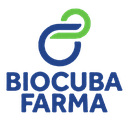Executive Secretary

IX Conferencia Científica Internacional sobre Desarrollo Agropecuario y Sostenibilidad
X Simposio de Agronomía
Resumen
Problemática: Todavía no se logra los rendimientos deseados por áreas del cul tivo del frijol. El trabajo se realizó con el Objetivo(s): Evaluar la respuesta morfofisiológica y productiva del frijol común (Phaseolus vulgaris L.) con la aplicación de bioestimulantes del crecimiento en los suelos del municipio de Manicaragua. Metodología: Los experimentos de campo se realizaron en el periodo comprendido de enero a abril de 2022. El diseño experimental que se seleccionó fue el Haden con 3 tratamientos, correspondiéndose con aplicación de CBQ Agro-G (20 L ha-1), aplicación de FitoMas-E (2 L ha-1) y sin aplicación (Control), replicado tres veces cada uno. La siembra se realizó manual, con un marco de siembra de 0,70 x 0,08 m a una profundidad de 4-5 cm aproximadamente.
Resultados y discusión: los bioestimulantes tuvieron incidencias positivas con respecto al control, siendo el FitoMas-E significativamente superior a los demás, en los diferentes indicadores morfofisiológicos evaluados tales como área foliar, índice de área foliar, tasa de asimilación neta, tasa relativa de crecimiento y tasa absoluta de crecimiento. El rendimiento estuvo influenciado por los tratamientos con bioestimulantes, siendo el tratamiento con FitoMas-E significativamente superior. Conclusiones: En los diferentes indicadores morfofisiológicos evaluados, los bioestimulantes tuvieron incidencias positivas con respecto al control, siendo el FitoMas-E significativamente superior a los demás. El rendimiento estuvo influenciado por los tratamientos con bioestimulantes, siendo el tratamiento con FitoMas-E significativamente superior a los demás.
Abstract
Problem: The desired yields are still not achieved by areas of bean cultivation. The work was carried out with the Objective(s): Evaluate the morphophysiological and productive response of the common bean (Phaseolus vulgaris L.) with the application of growth biostimulants in the soils of the Manicaragua municipality. Methodology: The field experiments were carried out in the period from January to April 2022. The experimental design that was selected was the Haden with 3 treatments, corresponding to the application of CBQ Agro-G (20 L ha-1), application of FitoMas-E (2 L ha-1) and without application (Control), replicated three times each. Sowing was done manually, with a sowing frame of 0.70 x 0.08 m at a depth of approximately 4-5 cm.
Results and discussion: the biostimulants had positive incidences with respect to the control, with FitoMas-E being significantly superior to the others, in the different morphophysiological indicators evaluated such as leaf area, leaf area index, net assimilation rate, relative growth rate. and absolute growth rate. The yield was influenced by the treatments with biostimulants, being the treatment with FitoMas-E significantly superior. Conclusions: In the different morphophysiological indicators evaluated, the biostimulants had positive incidences with respect to the control, with FitoMas-E being significantly superior to the others. The yield was influenced by the treatments with biostimulants, being the treatment with FitoMas-E significantly superior to the others.
Sobre el ponente

MsC. Elier Mora Pérez

Discussion

